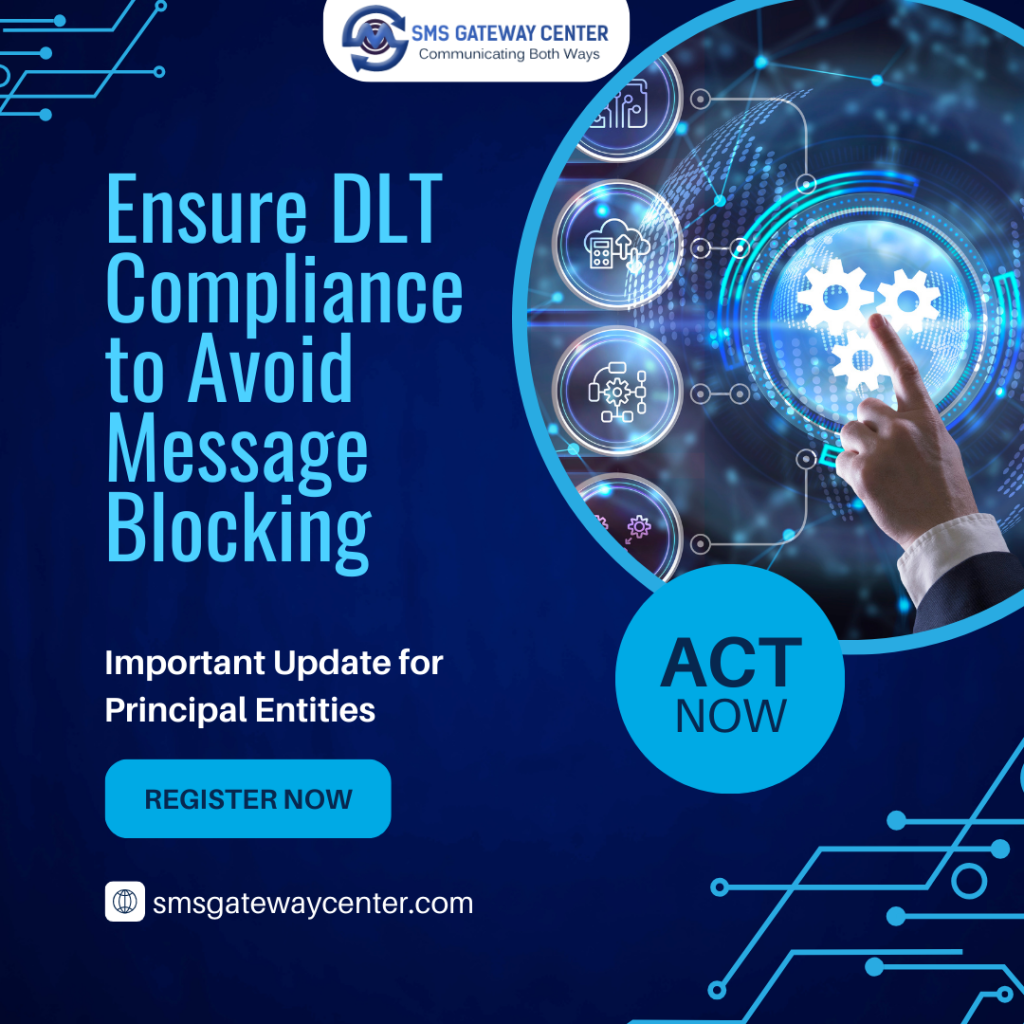Ensure DLT Compliance to Avoid Message Blocking – Important Update for Principal Entities
In line with recent Telecom Regulatory Authority of India (TRAI) guidelines, all Principal Entities (PEs) sending commercial communications via bulk SMS must now establish a fully traceable chain of telemarketers for each message sent to end customers. This directive, effective from November 1, 2024, ensures greater transparency, preventing misuse of headers and content templates, and curbs unauthorized activities across the telecom network.

Failure to comply with these guidelines will lead to SMS messages being blocked by telecom operators starting December 1, 2024.
Below is a breakdown of the key requirements, timelines, and steps that every PE must follow to avoid any disruption in SMS delivery operations.
Why Compliance is Mandatory
TRAI’s directions mandate that all messages from PEs to recipients must follow a clear telemarketer chain. This chain of responsibility, from Principal Entity (PE) to the last registered Telemarketer (TM) delivering the message, ensures that each communication is traceable. If this chain does not match with the pre-defined chain on the DLT platform, the message will be blocked.
This requirement is applicable across all telecom operators, meaning every PE needs to set up their telemarketer chain on the DLT platforms used by operators.
Key Compliance Steps for Principal Entities
To ensure a smooth setup, here is a point-by-point guide on establishing your PE-TM chain on the DLT platforms:
- Access the DLT Portal
Log in to your respective operator’s DLT platform to begin defining your telemarketer chain. You can find list of DLT portals Login Links. - Define the Telemarketer Chain
- PEs must define their telemarketer (TM) chain, which includes all registered TMs in the sequence through which the SMS will be delivered.
- The chain should ideally contain a single telemarketer with a delivery function or a multi-party chain with a maximum of three TMs, including the final Telemarketer Delivery (TMD).
- If more than two telemarketer aggregators (TMA) are required, provide justifications for each additional TMA.
Select the Role of Each Telemarketer
Each TM in the chain should declare:
- Whether they are the final delivery telemarketer (TMD) with a direct connection to the telecom service provider (TSP).
- If not, they should select another TM in the chain who will fulfill the delivery role.
Approval of the Defined Chain
- Once the chain is completely defined, the PE must approve it on the DLT platform.
- The TMD is responsible for hashing the entire chain to confirm compliance during SMS submission.
Verification During SMS Submission
For each message, the TMD will submit the full telemarketer chain to the DLT system. If the chain aligns with the one registered on the DLT platform, the message will proceed. Any discrepancy will result in message blockage due to a failed DLT scrubbing process.
Timeline for Implementation
To comply with these directives, here’s the recommended timeline for PEs and TMs:
- From October 22, 2024: Start defining and approving telemarketer chains on DLT platforms.
- By November 30, 2024: Ensure all telemarketer chains are fully approved and registered.
- December 1, 2024: Messages without a defined PE-TM chain will be blocked.
Flowchart for DLT Compliance
Below is a simplified flowchart showing the PE-TM chain setup process:
-> 1. Login to DLT Portal
-> 2. Define Telemarketer Chain
-> 3. Telemarketer Declares Role (Aggregator/Delivery)
-> 4. PE Approves Chain
-> 5. TMD Hashes the Chain
-> 6. Submit SMS for Delivery
-> (Verification of Chain on DLT)
-> Message Delivered / BlockedAvoid Disruptions – Act Now
To avoid inconvenience and traffic blocking, we urge all our clients to ensure their respective PE-TM chains are registered and approved as soon as possible. Failing to comply will lead to service interruptions, impacting SMS delivery operations.
For any further assistance or to clarify compliance requirements, please reach out to our support team.
By following these steps, PEs can seamlessly meet TRAI’s compliance standards, safeguarding their message delivery and maintaining uninterrupted communication with customers.

